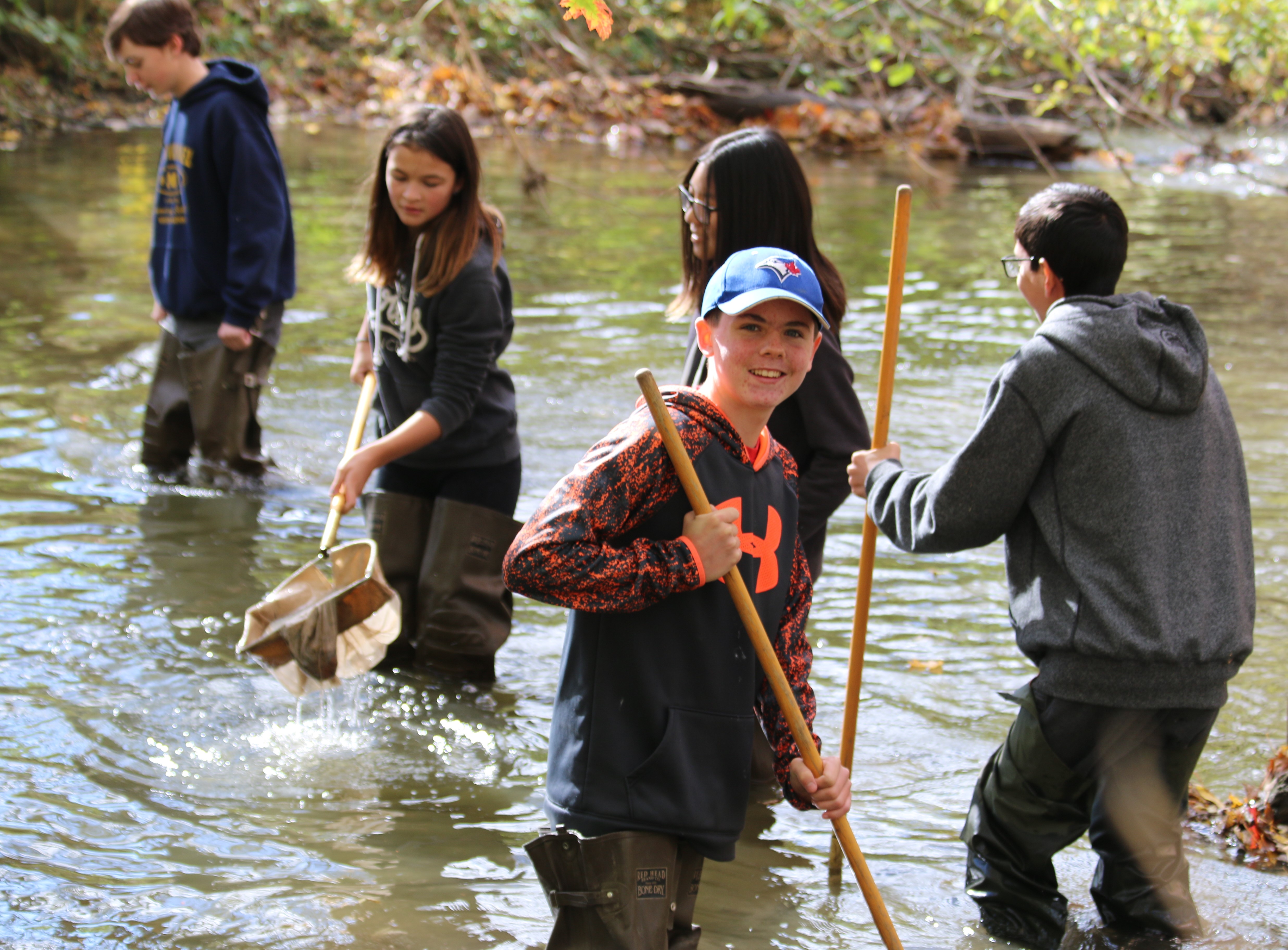Other Environmental Education Programs offered by Fanshawe Outdoor Education Centre Staff

In-Class Programs
Our enthusiastic teachers can bring environmental programming to your school. This affordable option introduces relevant, local watershed issues to your students.
- River Safety Education Program – Stay safe near rivers and streams! | Grade 2 | March and April
- Stream of Dreams | All elementary grades | Spring and fall
Off-site Outdoor Programs
Off-site programs take place across the watershed in unique natural areas that allow for specific habitat exploration and incomparable learning. Your students will take back wonderful memories from their adventure and a greater interest in and sense of responsibility for our environment.
- Sifton Bog Wetlands Program | Grades 3, 4, and 6 | September: Kick off your school year with a trip to the Sifton Bog, one of London’s most unique Environmentally Significant Areas (ESA)! During the program, students will hike along the boardwalk, learning about the bog’s creation, habitats, and unique species. They will then use their observation skills to complete a plant scavenger hunt. At the pond, students use dip nets to discover and identify aquatic invertebrates. An interactive demonstration illustrates how different surfaces can alter the speed, quality, and quantity of water in our environment. Students walk away from the program understanding how wetlands reduce flooding and reduce drought, improve water quality, and prevent erosion. Grade 4 – Science and Technology: Habitats and Communities.
- Watershed Report Card Program | Grades 11 and 12 | Spring and Fall | Various Locations: Are you interested in a program that challenges your students to learn more about environmental health? This integrated, experiential program is taught in two parts. The two hour field trip gets students in hip waders to gather water chemistry data using Vernier LabQuest 2 units and sensors (probes), assess aquatic habitat and surrounding land use impacts, and collect benthic invertebrates in stream riffles. The classroom component focuses on watershed forest cover and terrestrial impacts on water quality. Options for mitigation and restoration are discussed. Note: Program is held at various off-site locations. SVN3M, SVN3E, CGR4M.
Funding is sometimes available for the Wetlands and Report Card programs. Contact us for details.
Environmental Stewardship Programs
In spring and fall, students can participate in our Communities for Nature projects. Occasionally, we also undertake bioengineering projects to stabilize stream banks. These hands-on experiences give students an opportunity to help the environment. Contact us for more information or if you would like to be on a call-back list to get involved.
Communities for Nature Program:
- Community Forestry (April/May, October/November)
- Aquatic Connections (June)
- Spreading Like Wildflowers (June)
Bioengineering Program (December)

